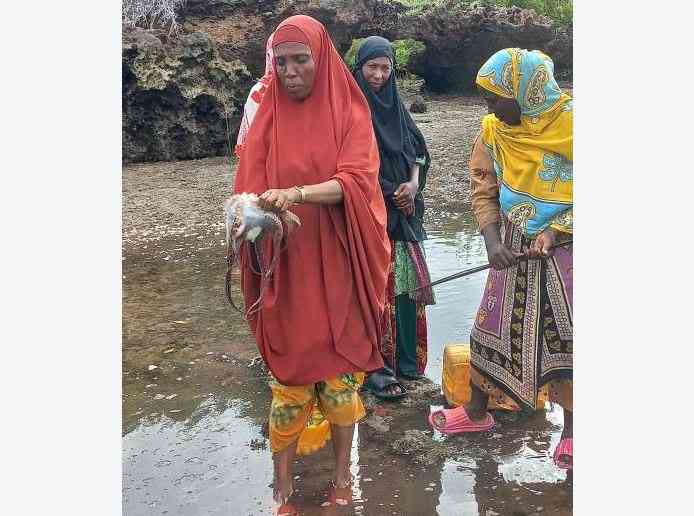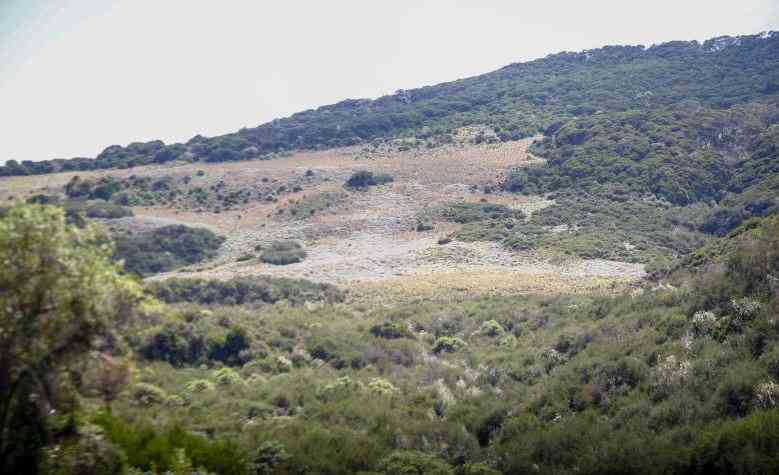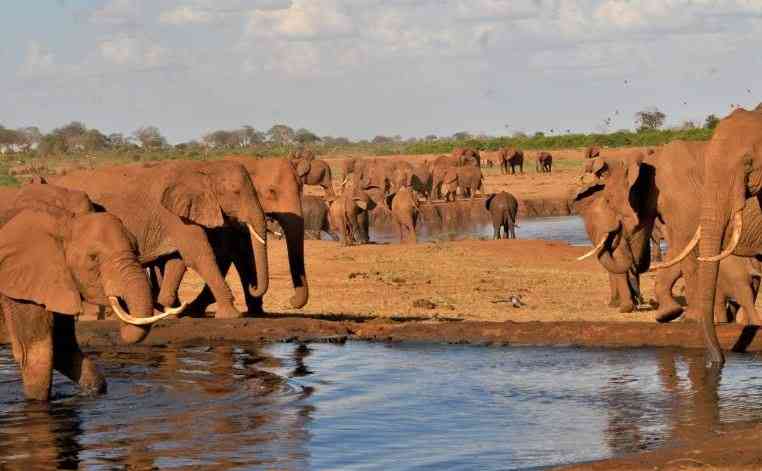
The squish plop, squish plop of squelching mud is the only sound many in our team of journalists are paying attention to. We are making our way gingerly through a patch of young mangroves on the edge of Pate Island in the Indian Ocean.
It is early morning and we are shod in boots that do little to keep the ankle deep slimy mud away from our socks and legs. Soon we give up and step into it, dragging along waterlogged shoes and trying to find a path of least resistance through the bog.
We are in the company of members of Mtangawanda Women's Group who move along more fluidly, used to navigating their way in the unfamiliar environment we find ourselves in.
Our mission? To visit the group's mangrove restoration sites and nurseries.
While the community has many things to keep them occupied, these women are more worried about the receding mangrove treeline right now, for a good reason.
Dwindling catches by fishermen meant the community struggled to meet their needs.
"In Mtangawanda, our biggest economic activity is crab fishing, now crabs are in plenty because mangroves are a breeding place and home for crabs," says the group's chair Shulfah Hassan.
The community has gotten an investor to build a boardwalk to make it easier for visitors to see what they're doing without trampling on seedlings or, for those who balk from the mid, getting dirty. More visitors mean more money.
- Young environmentalist working with schools to conserve environment
- Community conservation efforts give lifeline to Sabaki River estuary
- Climate justice and conservation are undeniably interconnected
Keep Reading
There is already talk of a hotel nearby, all good signs for this essentially subsistence fishing community.
But Mangrove deforestation is not a new problem, it has been happening for a long time, the sturdy trunks and branches favoured in the production of lime, going back generations.
Pate Marine Community Conservancy Chairman Mahmoud Yussuf explains that mangrove trunks would be used to heat limestone in the production of lime.
Over time, this had an adverse effect on mangrove forest cover along the coast. But now that the community is feeling the pinch more intensely.
Dwindling mangrove forests meant the community lost on the benefits they offered.
Mohammed Shani, a marine conservancy development officer with Northern Rangelands Trust (NRT) says in addition to things like wood products and some mangrove species are mosquito repellent.
He says mangrove also protect coastal communities from storms and strong have strong roots which bind soil, helping reduce soil erosion. They are also home to marine fish and crabs.
As the forest cover went down therefore, even catching crabs and fish, the economic mainstay of this community, became harder every day.
The conservation efforts have also borne other benefits, says Shulfah.
"We have learnt a lot about mangroves, I am now an expert on mangroves."
"Our biggest challenge is water for domestic use, but when these organisations come and see what we are doing, they step in and help us. Now we have a water desalination system," she says.
A day later, a little farther on, in Shanga Shakani, still on Pate, Zainabu Mwalimu deftly maneuvers a stake in a hole under the shallow waters not far from a small island that houses a rangers outpost. Slowly an octopus tentacles reach out, as if trying to take the stake away from her, before long she has the cephalopod in her hands.
Zainabu is a member of the Shanga Shakani Fisher Women's Group, and they have made the ocean their farm, literally. The site we are standing on is a 105-acre octopus 'farm' or enclosure, Jambaidodi. Unlike your regular farm, however, this one is in the ocean.
To get to Shanga Shakani, we had to wake up at 4am to start moving to take advantage of the high tide. Once the tide goes out, we would not be able to reach the site. We also have to hurry to catch the tide out again.
We're only here for a few hours, but for the women of Shanga Shakani and Pate Marine Conservancy, this is their life every day.
"We are fisherwomen from a long time ago, but when we started in conservation, we travelled to Madagascar courtesy of NRT and TNC (The Nature Conservancy), where we saw how women conserve and fish octopus," says the group's chairlady Amina Ahmed Mohamed, better known here as Mama Pweza.
They leave the enclosure to lie for four months after which they come in and harvest their catch.
"We first closed it for four months, after the four months we got 186kgs, the second time we got 868kgs, the third 1,527kgs," says Amina proudly.
"We now felt our farm had matured and were inspired to continue our conservation journey."
When they fish their octopus, the price goes up. She says when we visited the price was Sh120 per kilogramme "but when we harvested we opened with 400 per kilo."
"All our members are benefiting, they have built nice houses and are taking their children to school," says Amina on what keeps them going.
Their enclosures had another happy outcome. With reef restoration in the same area and zoned off octopus farms, waters around are reaping the benefits with increasing fish numbers.
With dwindling fish numbers, fishermen - their fathers, husbands and sons - had to go a little further out to sea and cast their nets a little deeper to get a good catch.
At the reef restoration site, the brave enough to get into the water report all kinds of fish under the surface, the conservancy rangers around us smile happily.
What do they do with the money they make?
"We keep money in our account and split at the end of the year. From this fishing, we have also bought two boats. Mama Pweza 1 and Mama Pweza 2," says Mama Pweza.
The boats help move the women around, a relief especially due to local cultural norms that frown upon men and women mixing on fishing boats. Men however, still pilot the boats, but the group hope to soon have women coxswain and divers.
"At the same time, we have built a nursery school, Pweza Nursyery School. Shangashakani did not have a nursery school. We bought land and started building, the county came on board and helped us finish the school," says Amina.
"For every kilo of octopus sold Sh30 is set aside to go into the community account to support the livelihood project but all the other remaining amount goes directly into the into the (fisherwomen's) pockets," says Hassan Yusuf, NRT Coast Regional Director.
Hassan says they started helping communities design effective fisheries co-management areas in 2014. These comprise of no-fishing areas, seasonal areas like the octopus enclosures, gear restriction areas and fish size limit areas.
"One of the things that women chose to start with was the establishment of the octopus enclosures," says Hassan.
Why octopus?
"This is because of the biological characteristics of the of the octopus," he says.
"The octopus grows very fast. They mature fast and have a short lifespan (between between 18 to 24 months)."
"Also, octopus has short movements. So for you to establish an octopus enclosure you don't require a very big area."
Shani says while around 80 per cent of this community depend on fishing, the catch has been declining.
Pate Marine Community Conservancy Chairman Mahmoud Yusuf says women in the community have always fished for octopus. However, the new approach has taught the community more about conservation.
 The Standard Group Plc is a multi-media organization with investments in media platforms spanning newspaper print
operations, television, radio broadcasting, digital and online services. The Standard Group is recognized as a
leading multi-media house in Kenya with a key influence in matters of national and international interest.
The Standard Group Plc is a multi-media organization with investments in media platforms spanning newspaper print
operations, television, radio broadcasting, digital and online services. The Standard Group is recognized as a
leading multi-media house in Kenya with a key influence in matters of national and international interest.











